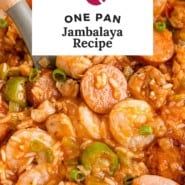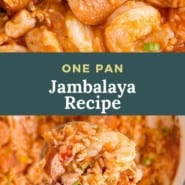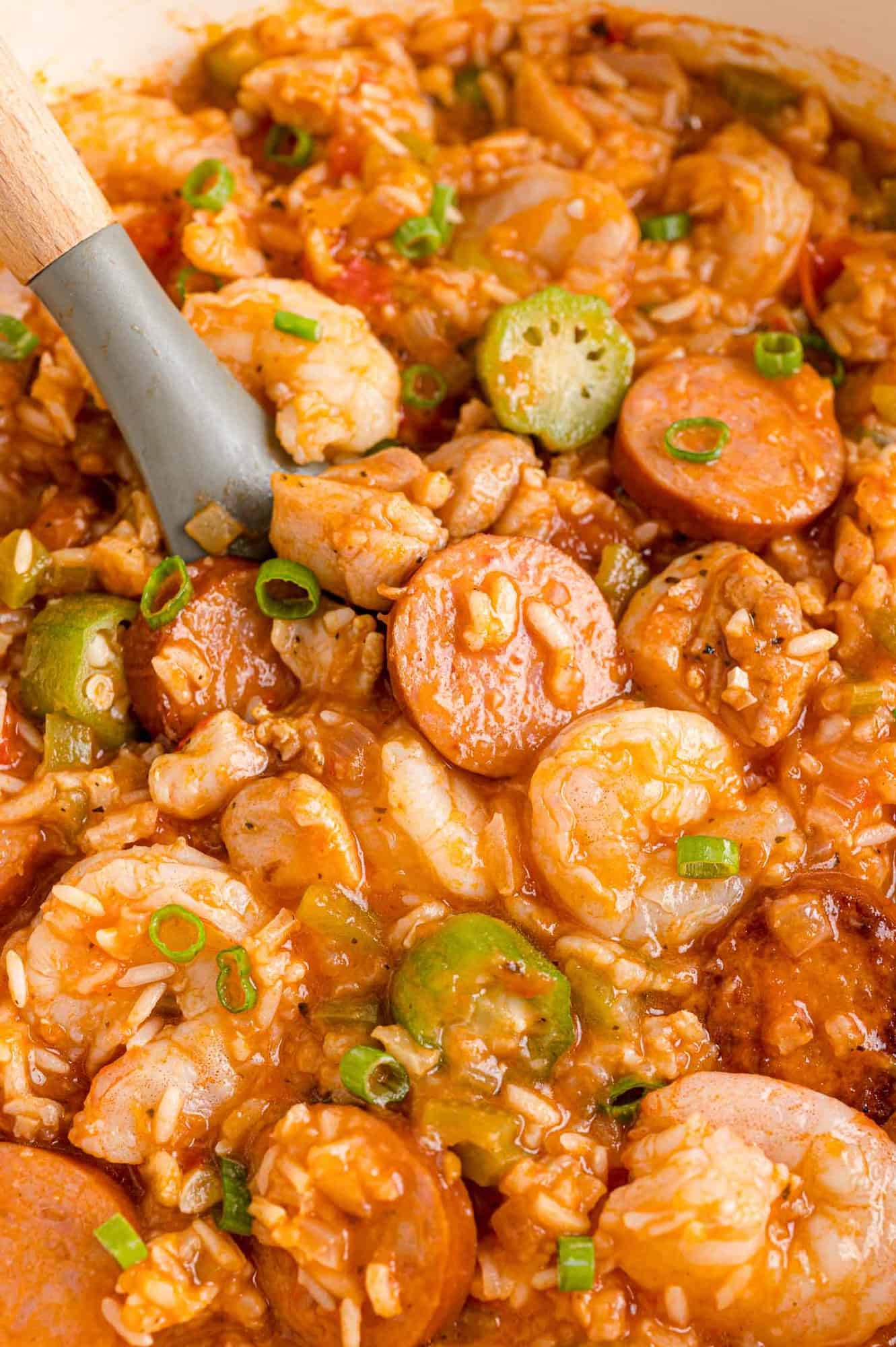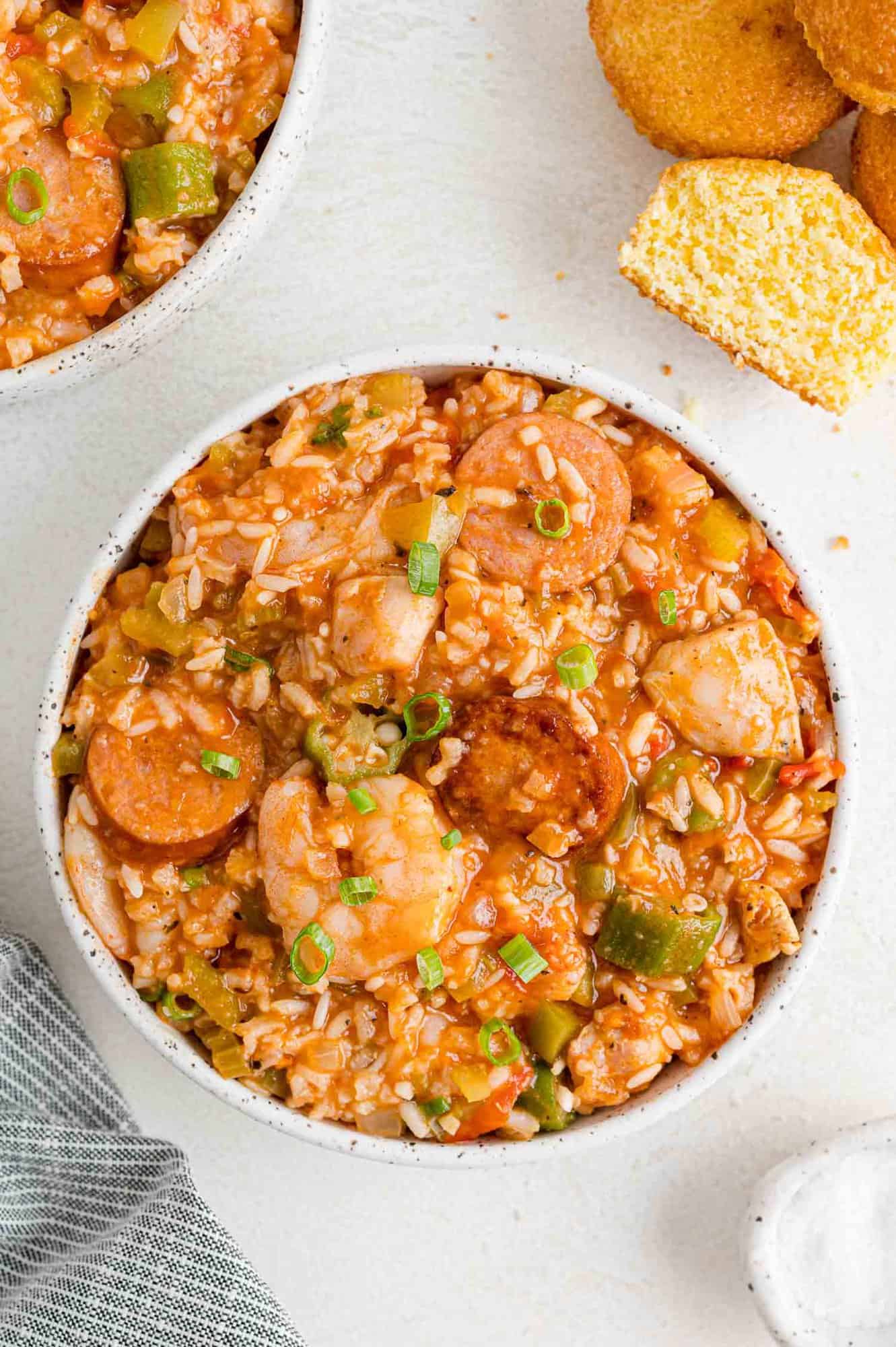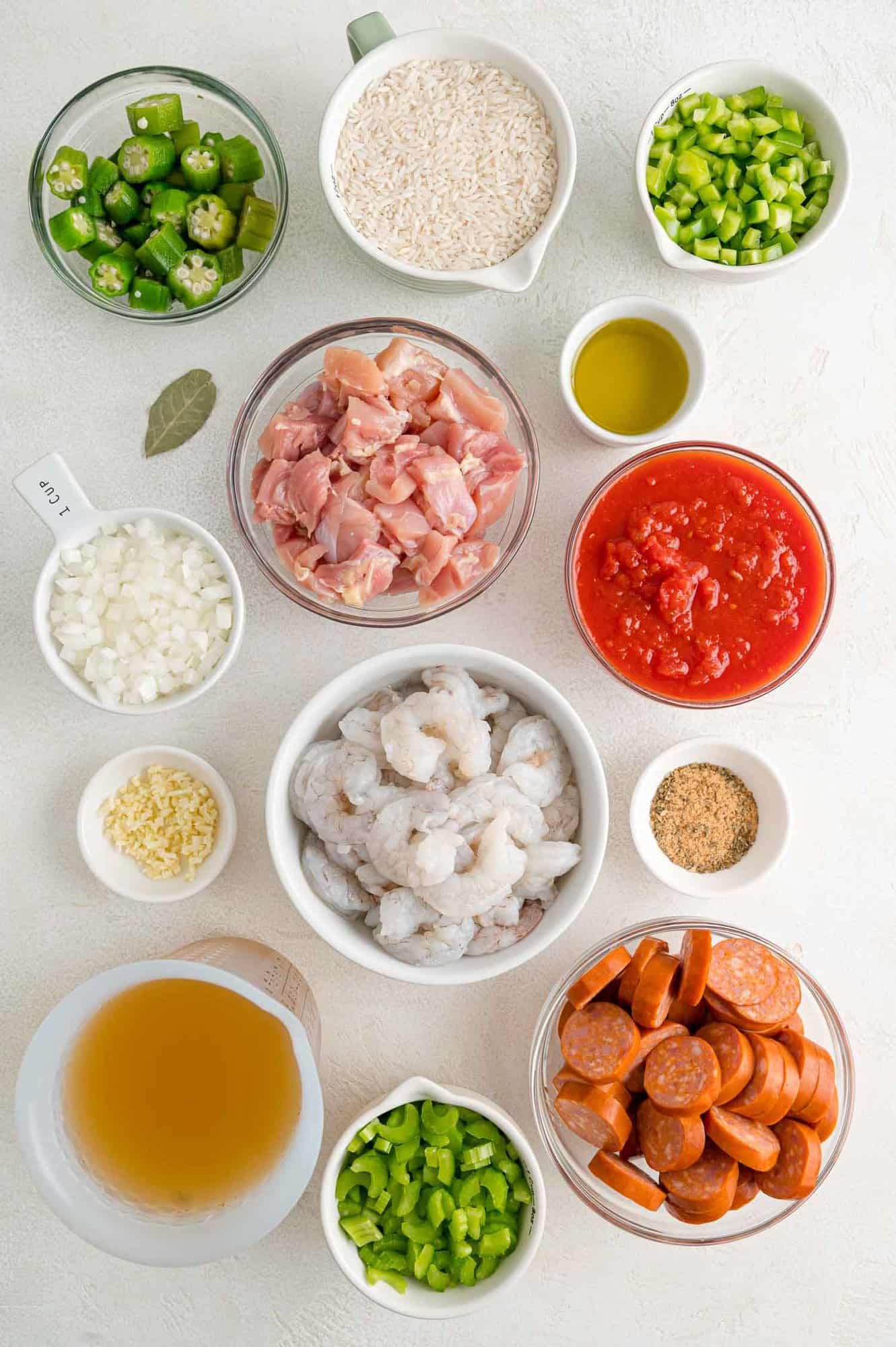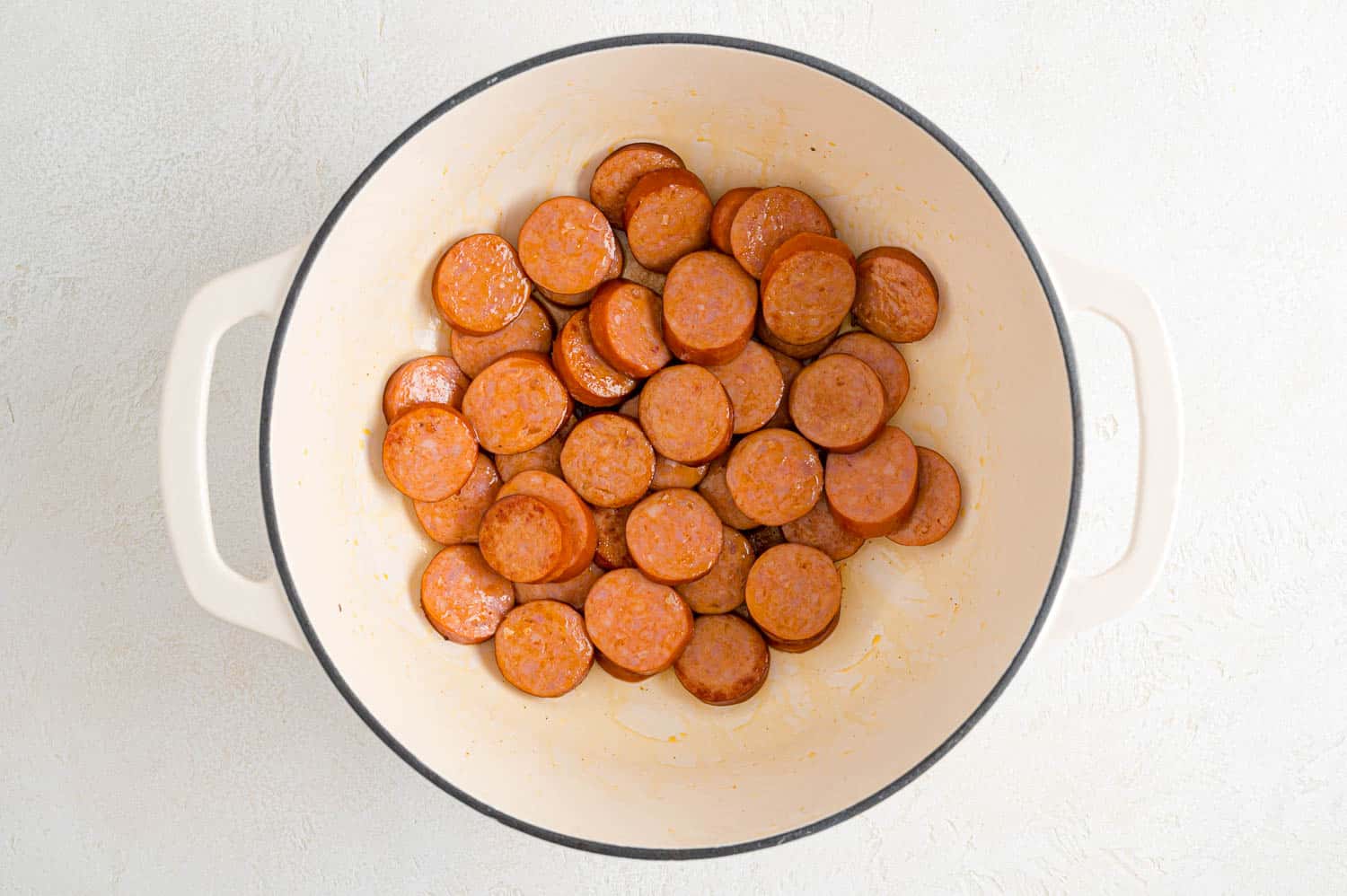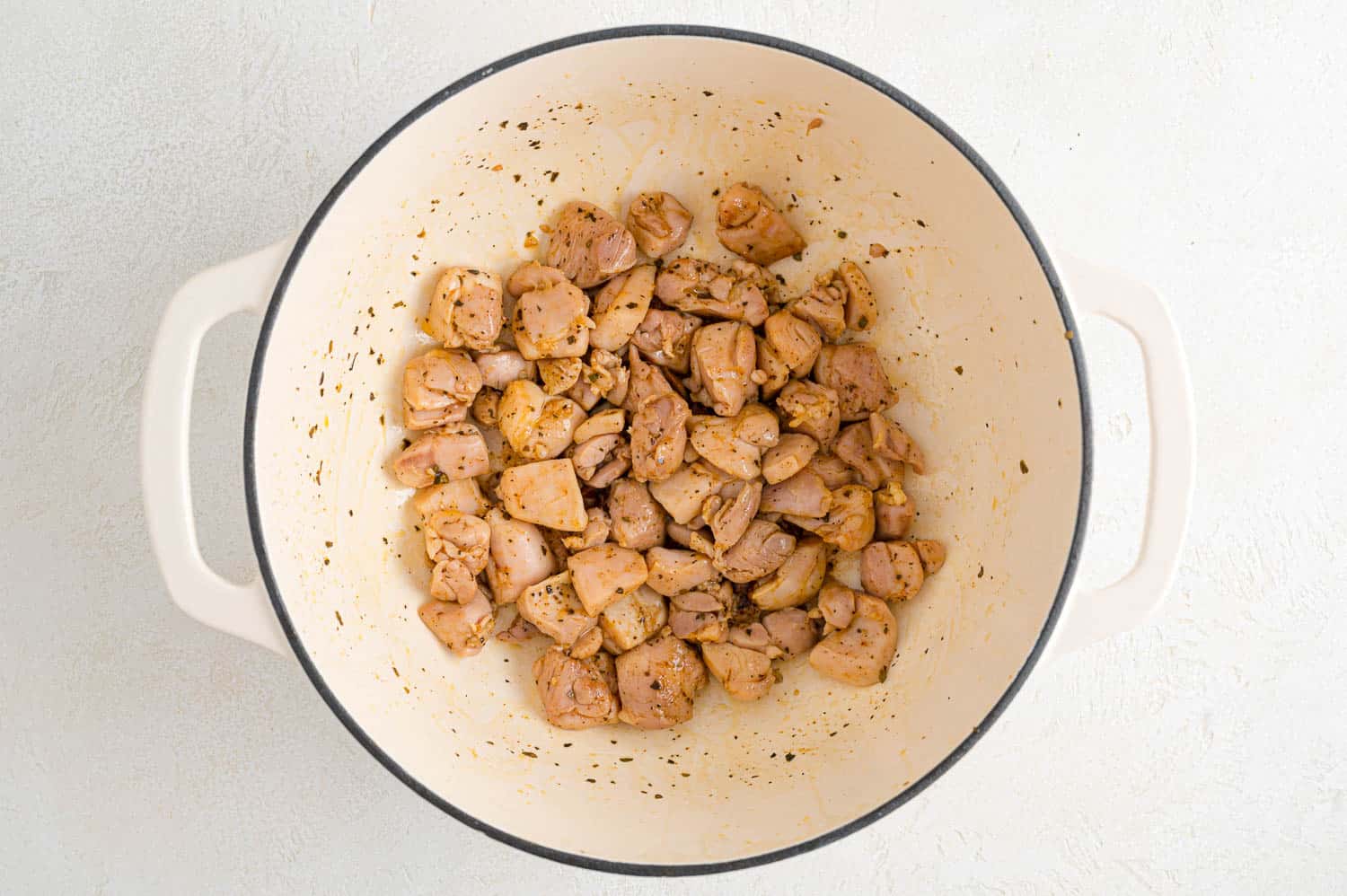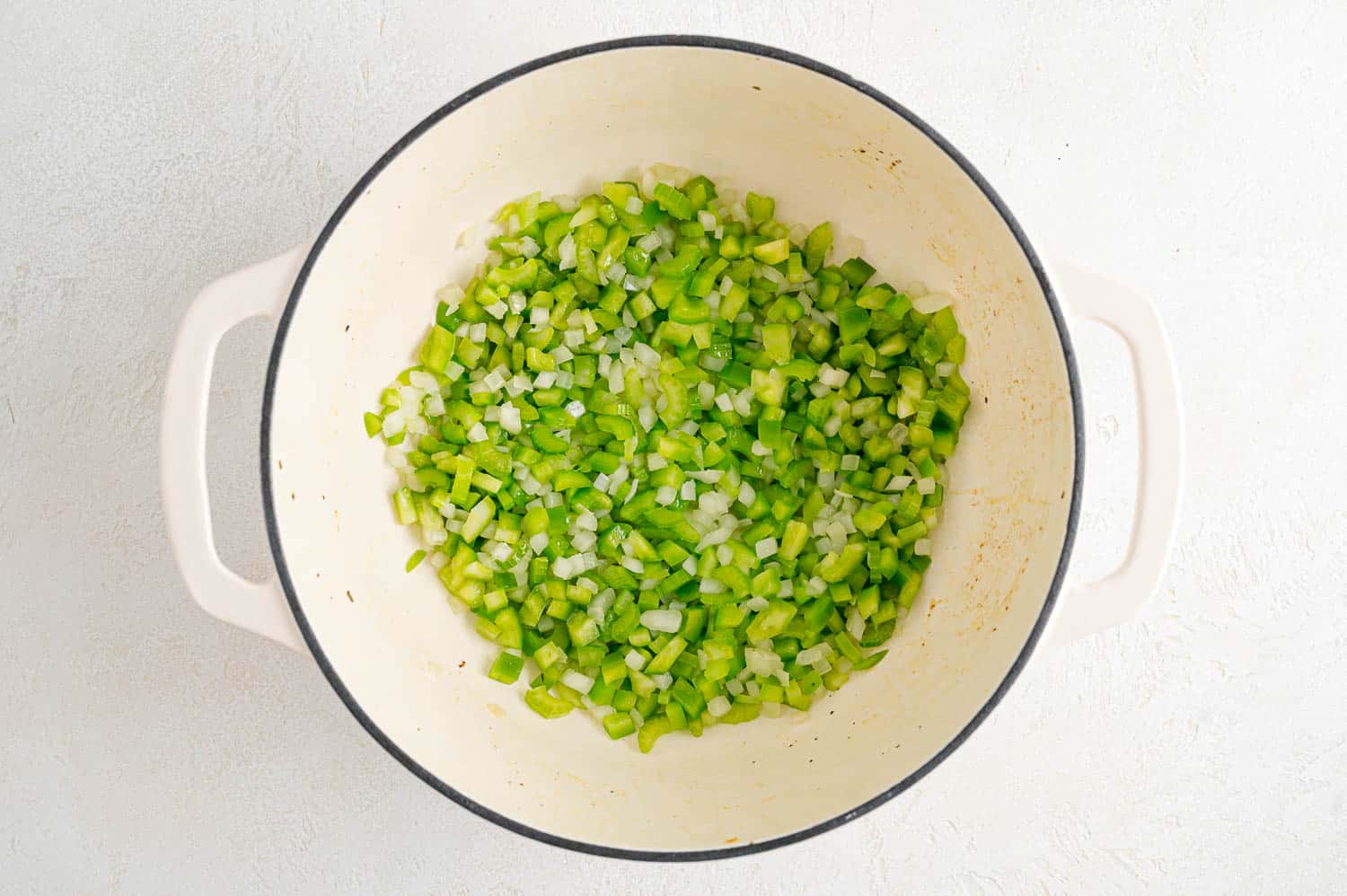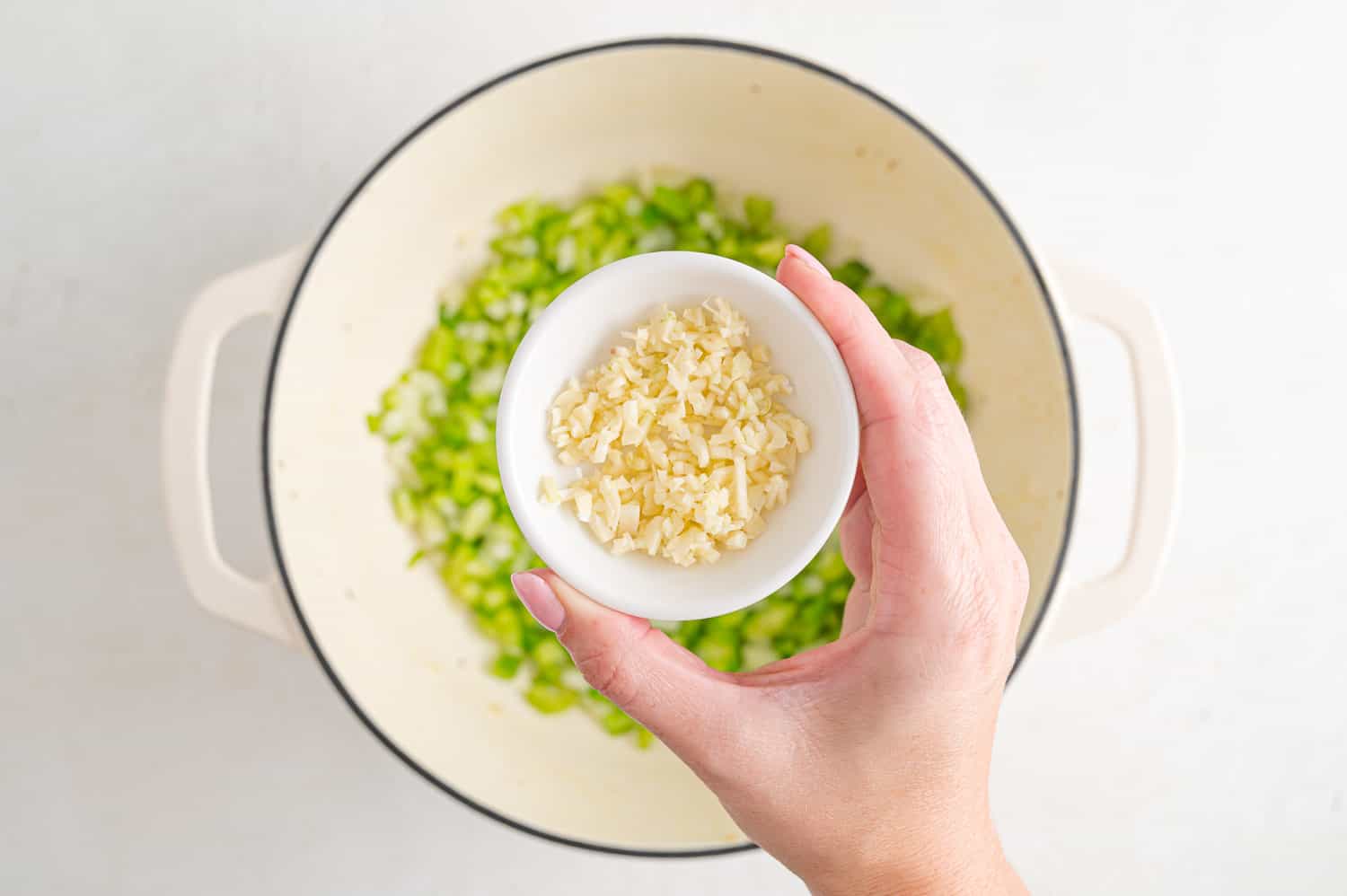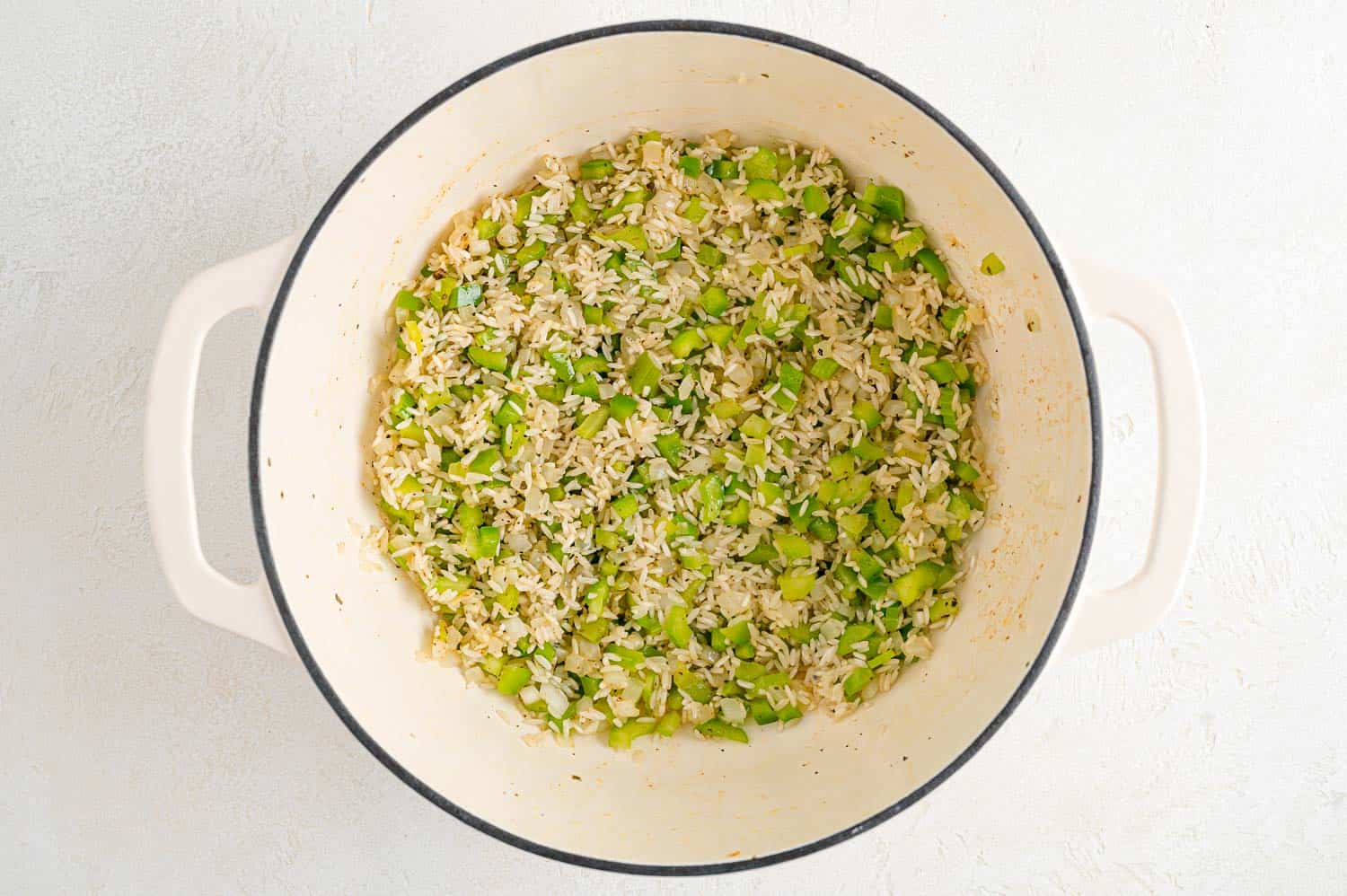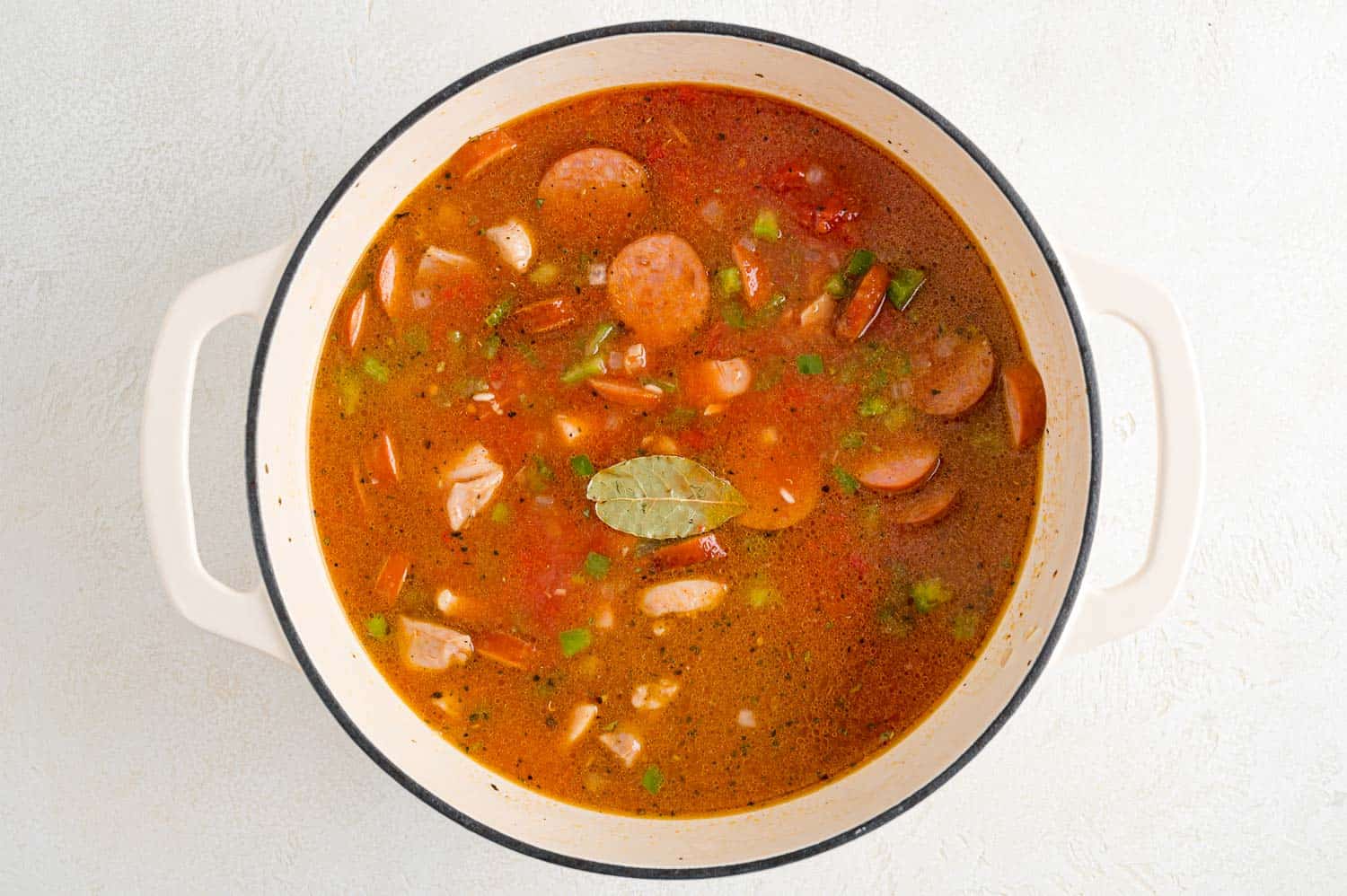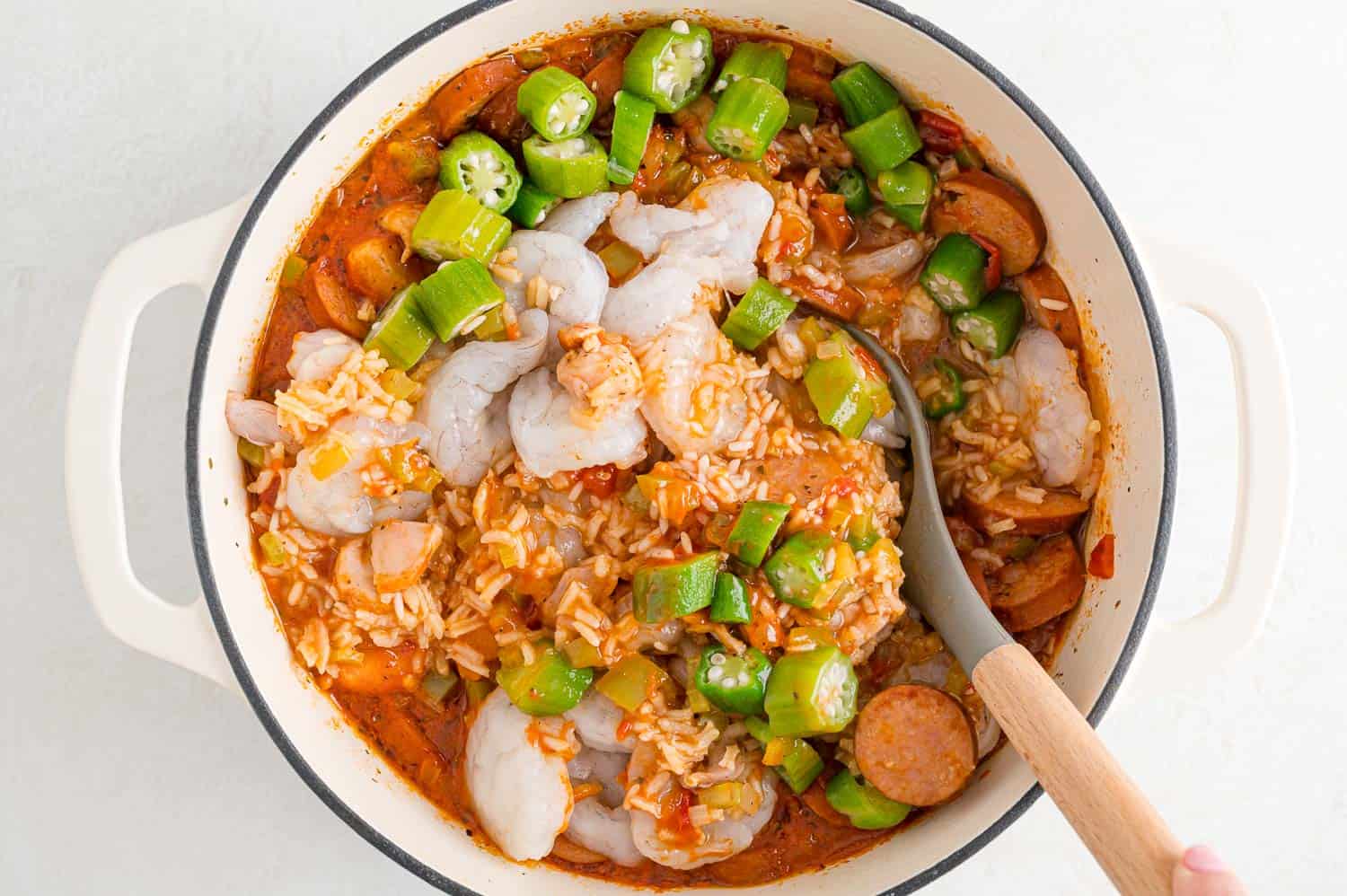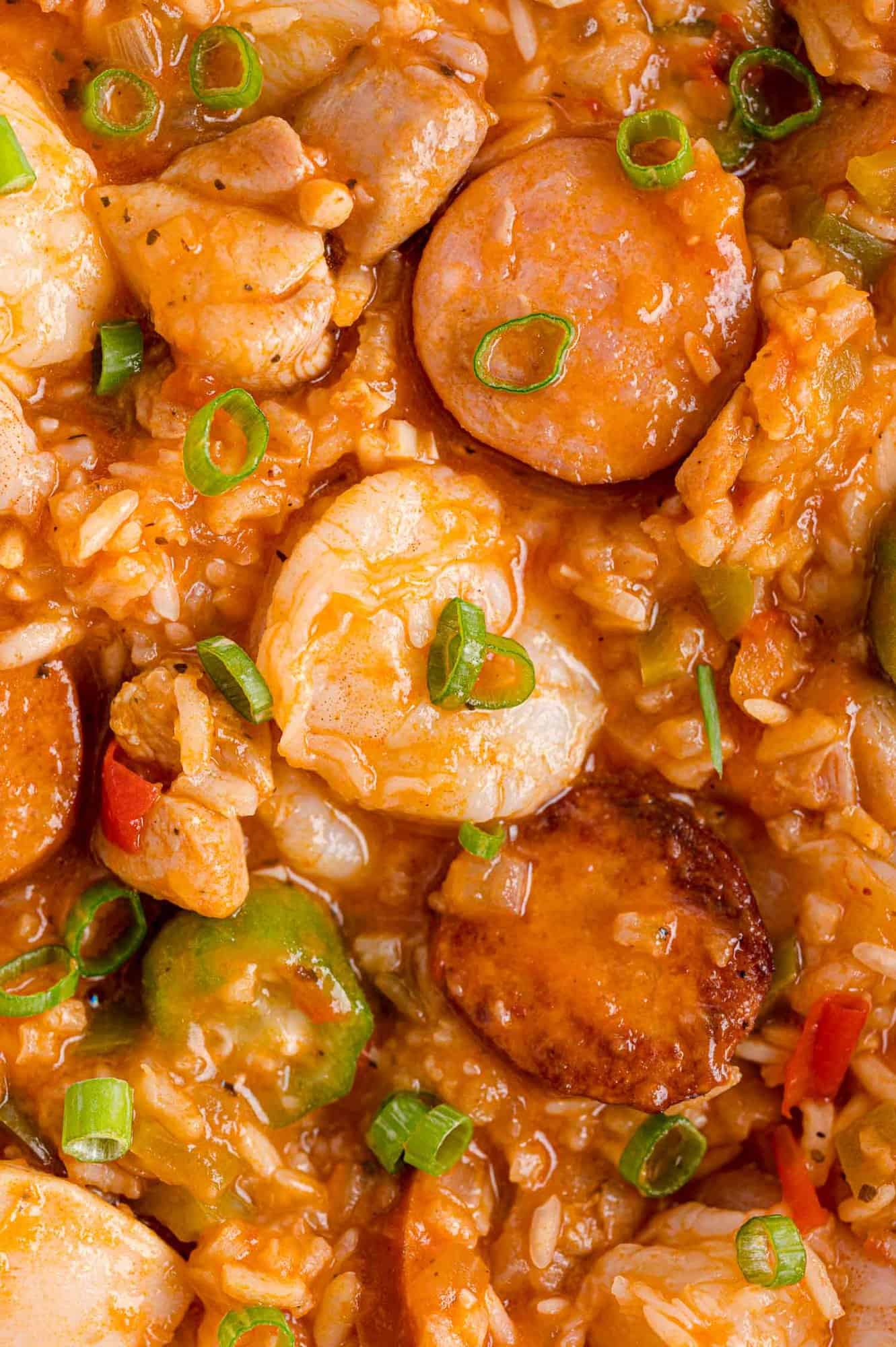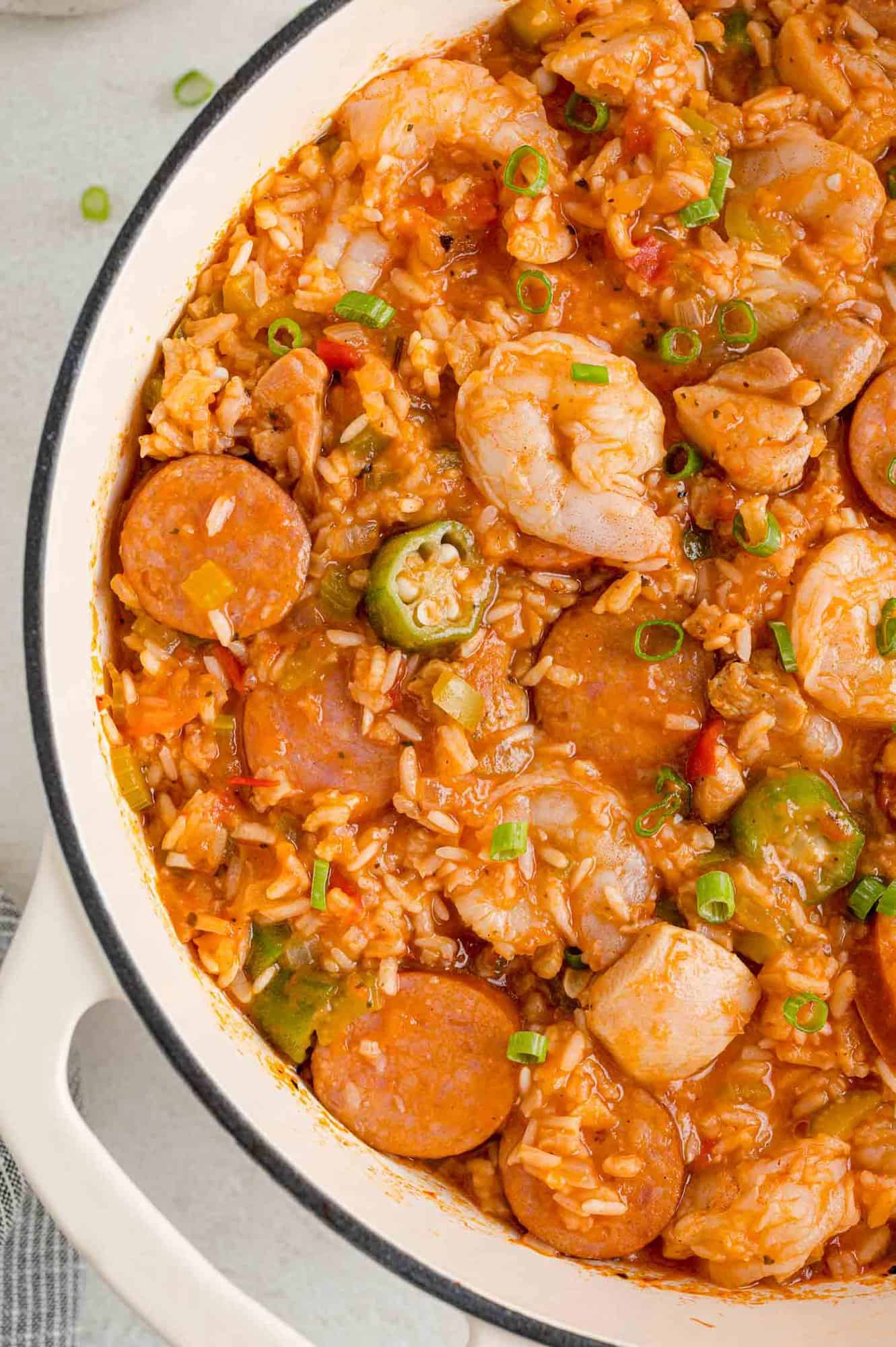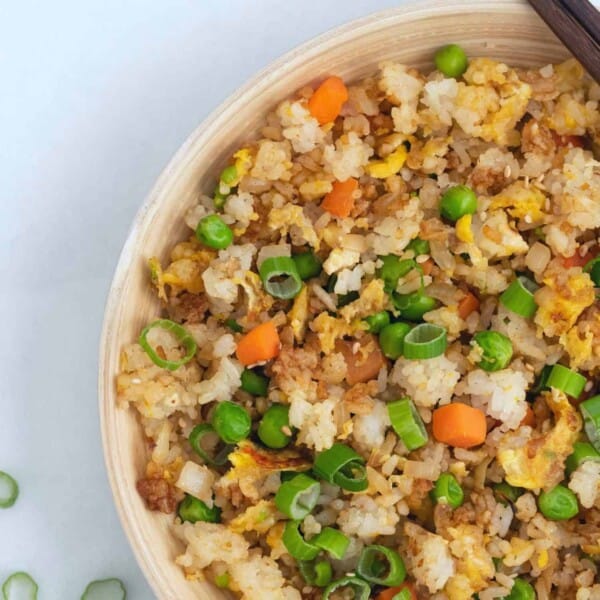Jambalaya is perfect for cold winter nights. It’s warmly spicy, hearty, and satisfying, just the ticket when you’ve been skiing, snowshoeing, or hiking in the snappy cold winter air, or even just shoveling snow. How long it takes: about an hour Equipment you’ll need: large heavy pot with lid Servings: 6 Ever since my husband and I visited New Orleans for a quick anniversary trip, I’ve been anxious to try my hand at jambalaya. We tested and tweaked and came up with a pretty darn good recipe. Jambalaya reminds me of a couple of recipes already on my site and I drew from my experience with those: sausage and rice with sweet peppers and Cuban chicken and rice. Be sure to try those recipes too because they are winners (and both are one pan meals!).
About This Recipe
This recipe is somewhat meat-heavy with sausage, chicken, and shrimp; each serving has a whopping 27 grams of protein. You would think it’s really rich but a generous two cup serving is just over 600 calories. As a point of reference, compare that to a Big Mac with 563 calories, just for a simple burger. Is this recipe authentic? I always hesitate to call a recipe authentic. There are many recipes for jambalaya and it seems like every cook likes to put their own spin on it. That’s okay and you are welcome to do the same. This recipe includes the ingredients that are typically found in jambalaya. We’ve tested it several times and really like the final result. We’re sure that you will too! It’s a one pan recipe which means you won’t spend hours cleaning up. You’ll need a good sized heavy pan with a lid. A Dutch oven is perfect.
What you’ll need
How to make it
Okay, ready to jam? Or should I say JAMbalaya? Ha, ha. I like to get all my ingredients lined up, the veggies and meat prepped, the cans open and so on, before I begin cooking. It can be a little stressful when you’re chopping, measuring, and sautéing all at the same time. Cooking should be fun, not stressful. Slice the sausage and cut the chicken into 1 inch pieces. First, brown the sausage in a little oil for a few minutes and remove it from the pan. Season your chicken with a bit of the cajun seasoning and then brown the chicken in the same pan. It won’t be completely cooked; you just want to get some nice color on it. Now for the holy trinity: onions, peppers, and celery. Give them a nice sauté in the pan. When the onions turn translucent (clearish), add the minced garlic and stir that for a minute. When garlic starts to smell super good, throw in the uncooked rice and some Cajun seasoning. Cook and stir the veggie/rice/seasoning mixture until the rice and spices smell toasty, just a few minutes. Your kitchen should be smelling really fine by now. Return the chicken and sausage to the pan. Add the broth, crushed tomatoes, and bay leaf. Give everything a good stir and bring it to a boil. Turn the heat to low, cover the pan, and let it simmer. Chill out for awhile while the rice cooks. This is a good opportunity to thaw out the shrimp if you haven’t done that already. Set the table, check your emails, clean up the kitchen, whatever. Don’t be tempted to take the cover off and stir. You want to keep all that hot steam inside because that helps cook the rice. If you can’t stand it, or if it smells like it’s burning or something, take the cover off once, give it a peek to reassure yourself, and then quick cover it back up. Okay, time’s up. Now you can check the rice. It should have absorbed most of the liquid. Fluff it up and check to see if it’s tender. If it’s not, cover the pan and cook it a few more minutes. When the rice is ready, add the shrimp and okra. They don’t take long at all to cook, maybe five minutes, depending on the size of your shrimp. When the shrimp is pink and curled, your jambalaya is ready to eat. Try a spoonful and check the seasonings. You may want to add more salt, pepper, or even more Cajun seasoning. It’s up to you. Serve the jambalaya with sliced green onions and pass the hot sauce. Steaming wedges of buttery cornbread, corn muffins, or homemade biscuits go really well with jambalaya. I like to serve a vinegary cucumber salad to balance the richness of the meat. Enjoy!
Make It Your Own
Because there are many components to this recipe, it’s easy to make variations. However, the more changes you make, the less authentic your jambalaya will become. That being said, you’re the cook which gives you every right to do what you like. Some ideas:
Eliminate one or even two of the meats. Or, if you want a vegetarian/vegan version, substitute crispy tofu, black beans, kidney beans, or vegan sausage. Add even more veggies. Bulk up on the onion, peppers, and celery, or add finely diced carrots or shredded cabbage. I can see myself substituting baby spinach for the okra some day. Spice it up or spice it down. It’s up to you. If you want to add more spice, throw in a pinch or two of red pepper flakes or a couple of jalapeños.
Make-Ahead Ideas
This recipe makes a pretty big batch. The good news is that jambalaya can be frozen for up to three months. Here are a few tips:
If you are planning on freezing the jambalaya, omit the shrimp and add it when you reheat the jambalaya. Spread the cooked jambalaya out so it cools quickly. Store it in freezer-safe containers, preferably individually sized ones (more convenient). It’s best to thaw it overnight in the refrigerator. Reheat the jambalaya in a skillet on the stove. Add the raw shrimp; it will cook very quickly.
Storage & Reheating Tips
Leftover jambalaya can be covered and refrigerated for up to 3 days. For best results, reheat in a skillet over medium high heat, stirring very frequently.
